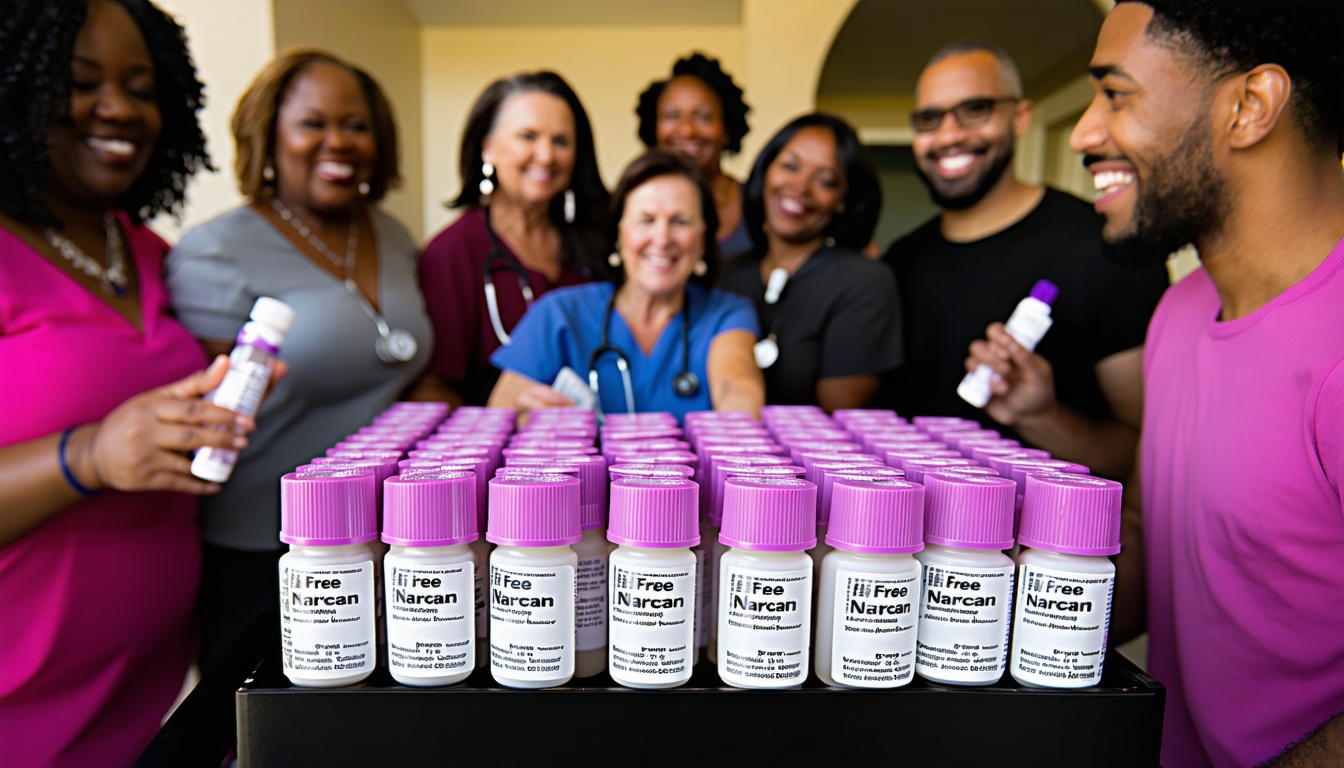Understand medically supervised detox
When you begin searching for solutions to help you or a loved one break free from drug or alcohol use, you may come across the term “medically supervised detox placement.” This process involves finding a treatment setting where trained professionals closely monitor your withdrawal, helping you transition from active substance use to a healthier, more stable condition. Unlike attempting to quit on your own, medically supervised detox ensures that you receive a thorough evaluation of your needs, a tailored plan for managing withdrawal, and a supportive environment throughout the process.
Medical detox goes beyond simply removing toxins from your body. It also helps identify co-occurring medical and psychological conditions, screens for risks related to withdrawal, and addresses your unique circumstances. Detox might include medications or therapies that reduce discomfort, prevent complications, and ease the transition into long-term recovery. At times, you may not realize the extent of physical harm substance use has caused until you stop, so having skilled professionals nearby can be an immense source of reassurance during those difficult first days.
Additionally, professional detox lays the foundation for your treatment journey. Many individuals who complete medically supervised detox find it easier to move on to full rehabilitation programs, such as alcohol addiction treatment or opioid addiction treatment. Your body becomes more stable, toxic substances are out of your system, and you can start focusing on deeper aspects of recovery, such as trauma, emotional well-being, or psychosocial issues.
Recognize importance of placement
Choosing the right setting for detox requires an understanding that no single approach works for everyone. You might benefit from outpatient care, where you visit a clinic regularly for monitoring and medications, or you may need a 24-hour inpatient facility if you have severe withdrawal risks or co-occurring health issues. Misplacing yourself or a loved one in the wrong type of care can result in incomplete or unsafe detox, potentially undermining the entire recovery process.
Clinicians often rely on guidelines from the American Society of Addiction Medicine (ASAM) to determine your specific needs. The ASAM criteria break down your situation into six assessment dimensions, covering factors like withdrawal potential, underlying medical conditions, mental health challenges, and family or social environment. A proper, individualized evaluation ensures that you receive medical oversight that matches the complexity of your addiction history and personal circumstances. For example, if you are experiencing acute opioid withdrawal, the medically supervised environment may use medications such as buprenorphine or methadone to stabilize you safely. If you have more complex needs, you could benefit from services like our methadone treatment program or suboxone treatment program.
Additionally, placement must consider your emotional and behavioral conditions. Sometimes, men, in particular, grapple with unique challenges associated with traditional gender roles, societal expectations, or workplace responsibilities. These factors can increase stress and intensify cravings. When you feel understood and supported in a setting that addresses these emotional layers, it can improve your chances of success. By recognizing the importance of proper placement, you equip yourself with the best possible start to a sustained recovery.
Follow evidence-based approaches
Evidence-based approaches in detox are more than just buzzwords. They are the proven methods, research findings, and clinical guidelines that shape safe and effective treatment practices. With calls to helplines for substance misuse on the rise — in 2020, the SAMHSA National Helpline received 833,598 calls, a 27% increase from the previous year (SAMHSA) — there is a clear and growing need for validated strategies that help individuals navigate detox successfully.
Key frameworks such as ASAM’s Patient Placement Criteria ensure consistency in evaluating and placing individuals into the appropriate care level. These criteria reduce guesswork by considering six distinct dimensions of your well-being, including:
- Potential for experiencing severe or complicated withdrawal
- Existing biomedical conditions
- Emotional or cognitive conditions that could hinder progress or require more intensive support
- Willingness to change or readiness for treatment
- Risk of relapse if not placed in a sufficiently monitored environment
- The stability of your home or social environment
Utilizing guidelines like these can shape a customized approach that accounts for both your current health status and your future steps. Researchers also highlight the value of refining patient placement procedures, understanding the physiology of withdrawal in-depth, and leveraging pharmacological advances. For most individuals, outpatient detox has become a standard option once their withdrawal risks are assessed. According to research, over 90% of people with withdrawal symptoms from alcohol can be treated as outpatients, assuming they do not have complicating factors (NCBI Bookshelf). Yet when your situation calls for it, inpatient detox with 24-hour medical care can be essential.
Medical detox should also connect seamlessly to continued services, such as substance abuse counseling or co-occurring disorders counseling, ensuring that detox is the first of many steps in addressing the underlying causes of addiction.
Explore Freedom Treatment advantage
At Freedom Treatment, we understand that breaking free from substance use involves more than a one-size-fits-all approach. Our mission is to provide medically supervised detox placement in a setting that best fits your unique history, physical conditions, and emotional needs. We combine the empathy of professionals who truly care about your healing with a range of evidence-based strategies that prioritize your comfort and safety.
When you arrive at Freedom Treatment, you undergo a thorough evaluation to determine the appropriate level of support. If your withdrawal risk is high, our staff may recommend a structured inpatient experience where you have round-the-clock access to medical professionals. During this period, you receive medications to manage withdrawal, relieve cravings, and stabilize mood. For those with milder substance use issues, a carefully monitored outpatient approach may be suitable, combined with additional resources such as group therapy addiction counseling or individual therapy addiction.
We also recognize the importance of addressing factors like family responsibilities, work obligations, and personal stressors. That is why Freedom Treatment takes an integrated approach to care. You can explore programs that focus on the entire continuum of recovery, from detox and rehabilitation to aftercare. Our goal is to pave the way for you to step into a fulfilling life, free from the confines of addiction. We also offer distinct options for maintaining long-term support, including telehealth addiction treatment if you have geographical or scheduling constraints.
Moreover, our team engages with diverse populations. Whether you are a man considering a rehab environment tailored to male-specific issues, a woman facing the challenges of substance use while pregnant, or an individual dealing with a co-occurring diagnosis, you will find a structured yet empathetic pathway at Freedom Treatment. This sense of inclusivity, combined with adherence to industry standards, positions us as a trusted resource for those seeking lasting transformation.
Learn key detox phases
While every experience can vary based on the substance used and your individual health, medically supervised detox typically has several common phases. Recognizing each phase can help you feel informed and prepared as you take these important steps.
- Evaluation and planning
- Medical staff review your substance use history, mental health status, and physical exam results.
- You may need lab tests or a urine drug screen covered insurance to confirm the substances in your system.
- Determining your specific risk factors and readiness for change sets the tone for a smooth detox process.
- Stabilization and withdrawal management
- This period focuses on alleviating acute withdrawal symptoms that arise once substances are leaving your body.
- You might receive medications for symptoms such as nausea, anxiety, or insomnia. For instance, if you are detoxing from opioids, you could benefit from a suboxone treatment program or methadone treatment program under professional guidance.
- Regular monitoring of your vitals helps ensure no complications go unnoticed.
- Transition to therapy
- Once your withdrawal symptoms become less severe, you explore options for continued treatment, such as aftercare substance abuse program.
- This stage can include planning for cocaine addiction treatment, brixadi treatment program, or maternity addiction treatment, depending on your circumstances.
- Your medical team provides education about relapse warnings and helps you set realistic goals for long-term sobriety.
- Ongoing support
- Detox alone is rarely adequate as a complete solution. Studies show that only a small fraction of people who detox in acute care settings receive continued treatment during that same stay (NCBI Bookshelf).
- You can benefit from stepping into comprehensive counseling, whether it’s customized substance abuse counseling, telemedicine counseling service, or dual diagnosis treatment outpatient if you have a mental health disorder.
Across these phases, healthcare providers place emphasis on respect, compassion, and treating you as an individual. These foundational principles form the framework for achieving a sense of safety, self-confidence, and hope in your recovery journey.
Build a supportive environment
Whether you choose inpatient or outpatient detox, having a supportive environment can significantly influence your success. A place that respects your struggles, fosters accountability, and acknowledges your worth is easier to trust and rely upon, especially on days when you may feel vulnerable. For many, the initial withdrawal period can be physically and emotionally demanding. Being surrounded by peers and professionals who understand firsthand what you are going through creates an atmosphere of reassurance.
Support often includes more than just medical help. A holistic approach might incorporate emotional support, social interactions, and even spiritual activities to relieve stress. At Freedom Treatment, we embrace comprehensive care by offering access to a variety of therapeutic modalities, including suboxone vs methadone comparisons, group sessions, and specialized counseling. This holistic framework aims to empower you with the resources necessary for lasting recovery.
Additionally, gender-specific approaches can be especially effective for men or women who prefer an environment where counseling addresses issues such as masculinity norms or caregiving pressures. If you identify as a man coping with the weight of societal expectations, you might find an understanding community that encourages healthy emotional expression without judgment. Meanwhile, women, particularly expecting mothers, benefit from programs like pregnancy addiction treatment program, which concentrate on medical and psychological needs during pregnancy.
Consider supplementing your detox with family involvement through a family therapy outpatient program. If your loved ones understand the root causes of addiction, they can better support you once you leave supervision. In the end, an environment that addresses your emotional and social challenges alongside medical needs can deliver the guidance and encouragement crucial to persevering through your toughest days.
Take the next steps
After detox, you have a valuable momentum that can propel you into follow-up therapies, support groups, and long-term strategies. Detox alone marks the initial phase of recovery, but the underlying drivers of addiction often remain. Moving forward, you will likely need a plan that addresses the psychological, social, and occupational aspects of your life.
- Comprehensive therapy choices
- Look into outpatient addiction treatment if you value daytime flexibility.
- If you need extra layers of accountability, you can consider an intensive outpatient or partial hospitalization program.
- Engage in continuing therapies, like opioid withdrawal management program if opioids were your primary concern.
- Medication-assisted treatment (MAT)
- Several treatment protocols, such as vivitrol treatment program or individualized medication assisted therapy, aim to reduce your risk of relapse.
- MAT can be a powerful bridge during the delicate shift from active detox into stable sobriety.
- Peer and family support
- Support groups and community resources help reduce feelings of isolation. You can also consider telehealth options if you live in a remote area or have mobility issues.
- A strong social network encourages a sense of belonging, accountability, and compassion — all of which can ease the psychological burden of post-detox life.
- Long-term relapse prevention
- Even after rehabilitative care, keep a strategy in place. Chronic stress or sudden triggers can spark a return to old habits.
- A formal outpatient relapse prevention planning program can teach you coping mechanisms, identify triggers, and provide a safety net when challenges arise.
By uniting professional assistance with your personal determination, you can build a future where addiction no longer dictates your choices or clouds your ambitions.
Frequently asked questions
- What is medically supervised detox placement?
Medically supervised detox placement is the process of finding the correct facility or program where certified professionals can monitor and support you during withdrawal. This ensures that any medical, emotional, or psychological complications are addressed as you rid your body of addictive substances. By receiving regular checkups, administration of medications if necessary, and professional counseling, you minimize risks and improve your comfort level throughout withdrawal. - How long does a medically supervised detox typically last?
The timeline can vary based on the type of substance, frequency of use, and your overall health. Some individuals may need only a few days for mild withdrawal symptoms, whereas others may require a week or more if they have a more intense dependency. Factors like age and mental health also influence how well you respond to treatments. During your stay at Freedom Treatment, healthcare professionals monitor your symptoms daily and adjust your care plan accordingly. - Will I need medications during detox?
Many people benefit from medications during detox, especially individuals recovering from alcohol or opioid dependence. Medications like buprenorphine, methadone, or naltrexone can lessen cravings, reduce withdrawal discomfort, and prevent dangerous withdrawal effects like seizures. Your care team decides on medication use after considering your health status, substance use history, and personal preference. By monitoring your vitals and health indicators, professionals can ensure that medications are beneficial rather than harmful. - Is outpatient detox as effective as inpatient detox?
Outpatient detox can be highly effective for individuals who meet certain criteria, such as having stable vital signs, supportive home environments, or mild dependencies. Research shows that more than 90% of patients experiencing alcohol withdrawal can be treated safely as outpatients, given that they do not have substantial complications (NCBI Bookshelf). However, those who face intense withdrawal symptoms, have complex medical issues, or lack a steady support system may need inpatient detox for 24-hour care. Ultimately, the best setting is determined by medical assessments and personal circumstances. - Why should I choose Freedom Treatment for my detox?
Freedom Treatment combines a thorough, evidence-based approach with a compassionate, empathetic atmosphere. Our evaluation process uses reputable guidelines like the ASAM criteria to ensure proper placement. We also value diverse treatment pathways, recognizing that you have unique challenges, goals, and preferences. Whether your journey involves opioid addiction treatment, methadone clinic services, or dual diagnosis support, our team stands ready to guide you. We strive to offer comprehensive and individualized plans that supply the support necessary for lasting recovery.
By choosing a medically supervised detox placement that fits your specific needs, you lay a solid foundation for ongoing growth, healing, and relapse prevention. Freedom Treatment is committed to providing the supportive environment you need, from that first courageous decision to seek help, to the final steps of an empowering, substance-free life. Our approach addresses your unique situation as a whole, helping you manage withdrawal symptoms, connect with compassionate professionals, and ease into the next stage of your recovery plan. You are not alone on this journey, and with the right guidance, you can embrace a future defined by health, hope, and renewed self-discovery.











